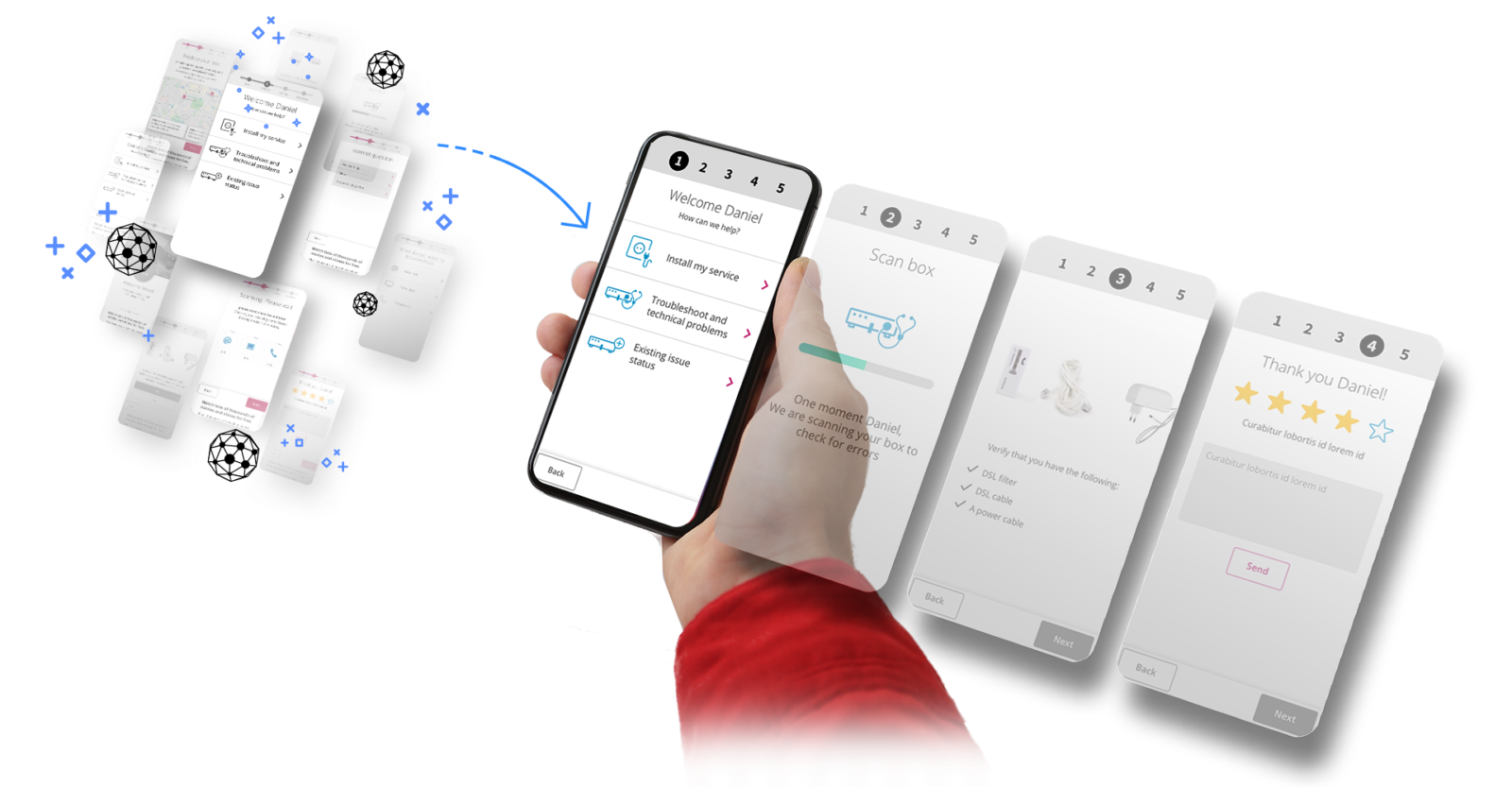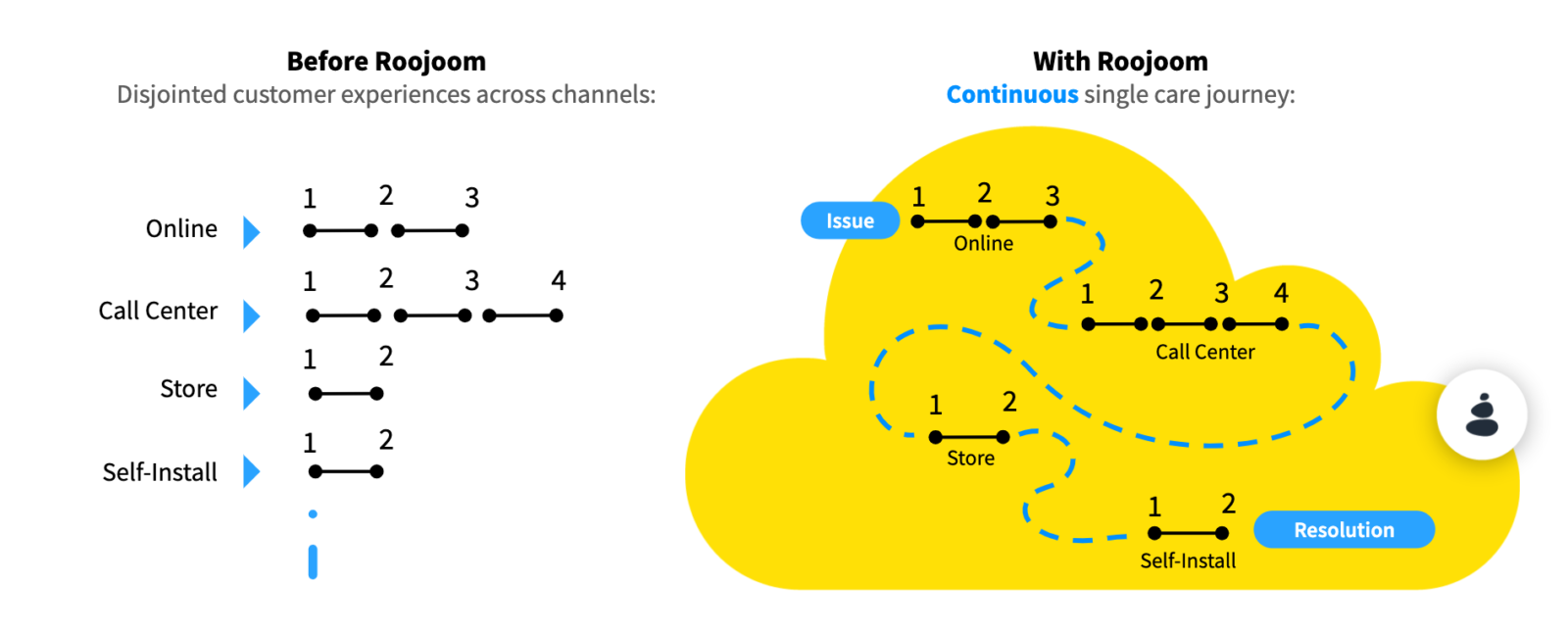Hiring the right AI for your customer service organization

The biggest challenge today that service providers have to face when looking at their digital and assisted customer service operations is creating “resolution capable” service channels that will not only reach the best resolution, but also do it quickly and prevent customers from dropping the session.
Nowadays most AI tech in customer service is being used for identifying the customer’s “intent”, meaning: understanding the issue a customer is having by getting their input in natural language. That saves some valuable time for the customer service rep or agent, but it does not resolve the issue there and then – in the digital channel.
Identifying the intent will only get you so far
As digital is becoming more and more present in our lives, customers too expect their service provider to expand digital interaction channels, and the most important interaction of all is, for customer support.
While AI is being utilized over the different digital channels to identify the customer’s issue, it doesn’t have the ability to continue the journey and drive it to resolution. So time is definitely saved on the agent’s side but not on the customer’s side, who will eventually be transferred to the call center regardless. As a result of this reality today, many customers prefer calling directly to the call center in the first place.
“Resolution Capable” service channels
A more advanced use of AI in customer service is going beyond the customer’s intent. It is possible to solve your customers’ issues on the first attempt they make using one of your digital channels, as each and every one of those (chat, web, app, IVR) could perform as a self-service resolution tool. Guided by AI, self-service channels as well as agent-based channels could individually reach the best resolution fairly quickly, significantly decreasing your digital sessions drop rates and enhancing the overall customer experience.
Playing the game of resolution
As AI was proven to outperform human players in strategy games such as Chess or Go, for customer service journeys it can be looked at as playing a game of “reaching resolution in minimum steps” – balancing between the number of questions the customer may be asked during the journey and accelerating the journey for faster resolution. This capability is extremely important for decreasing drop-rates of impatient customers that will give up and abandon the journey mid way.
Reaching the right resolution is a complex issue, not just a “classification” issue – attaching a solution to a problem. Your chosen AI needs to have the ability to lead the dialogue with the customer while asking the most accurate questions in order to reach the appropriate solution.
And what about the call-center?
The main benefit of letting AI run your agent-based support journeys as well as your digital channels, is that it can rapidly elevate the performance of all agents or reps involved in the process, mostly new or less experienced agents. This creates sustainable and ever-improving team excellence, which will naturally bring to improved customer experience and increase sales.
But not every AI journey orchestration platform can advance agent-based journeys as described above.
AI for customer service in agent-based channels requires some explainability capabilities: As AI will often present the agent with offers that are predicted to advance the journey, the agent will need to understand the reason for why the offer was selected, so it can be communicated to the customer.
A good example is an insurance representative receiving an AI recommendation to offer the customer the “Car & Home Insurance Bundle”. AI will then have to highlight the reason for that offer: “The customer holds a car insurance policy, but is also a homeowner that is not covered against floods. The customer lives in an area that is at high risk of flooding”.
Hire an AI platform specifically developed for customer service
To achieve all of the above capabilities, look for an AI-based customer service journey orchestration tool that can complement your existing AI platform by taking the information about the issue your existing channel has collected (e.g over chat) and driving the journey on this channel until resolution is reached.
Try to hire a platform that was specifically designed and developed for customer service challenges and comes as an out-of-the-box solution for your team to use and get all your channels to perform as “resolution engines”.
Achieving the target would mean that all your self-service channels perform, resolution wise, as agent-based channels and your agent-based channels perform consistently in par with your most brilliant agents or even outperform them.





